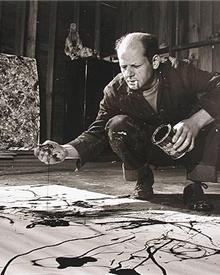Art Remains a Medium too Broad for Simple Adjectives
October 19, 2019
Have you ever been in an art gallery and seen a piece and thought “I could have made that as a child”?
If so you’re not alone. Most people boil down art into the most basic of adjectives and, for this discussion, I will be using these adjectives to summarize why this simplification is a detriment to how we view art. Modern and abstract art is often criticized by the general public as being “bad”. People criticize art that doesn’t fit the conventional parameters of art that is deemed “good”.
I believe one of the reasons for this dislike comes from our desire to find the concrete and non-abstract in the ever changing world. We, as a people, want to be able to have directness in the media, or a cut-and-dry meaning that doesn’t require much contemplation, we consume in an effort to find peace in our world. Art that is abstract, which modern art often falls under, has meaning and purpose that isn’t easily found. A famous example of this abstraction is found in the expressionist painter Jackson Pollock. Pollock created his paintings by splashing/pouring paints onto a surface lying horizontally, which is a technique that doesn’t lend to concrete shapes, let alone meanings. It takes time to grasp the full concept of a piece, such as his, or what the piece means to you. This lack of uncomplicated meaning shouldn’t be considered bad or worse than works with a more concise meaning because the heart and passion that an artist feels when creating is far greater than the end result. An example of this direct art can be found in the artist of the renaissance, such as Raphael or Michelangelo. Both of these artists used things like geometry and math in order to make the pieces concise and perfect, making any meaning fairly noticeable.
There are some works of art that, in a way, blend these abstract and concrete forms of art. An example of this would be the impressionist movement, in which things like portraits were painted in a manner that left much of the straight and clean lines out. Berthe Morisot was an impressionist art who did this with her paintings of people, which featured a lack of the elements that made something like Michelangelo, but wasn’t as abstract as someone like Pollock.
For example, realistic portraits are a type of art that will always be considered good. Being able to capture someone’s likeness in paint or graphite is truly an amazing feat, but I firmly believe that realism is not the only thing needed to make a piece of art worthy of praise.
Art is subjective. Let’s get that out of the way. Nobody can truly decide for everybody whether or not an artwork is good. It all depends on the viewer and the connection, or lack thereof, they feel with a piece. Not one feature or style of art is better or technically more worthy of our attention as consumers of art.
Ultimately, I believe that if an artist is passionate about what they are creating and they find some sort of meaning in the choices they made, then there is no reason to consider the art bad. I do find some merit in finding art that is created simply for a paycheck bad because usually when something is done entirely for the reason of getting paid, the creator rarely puts their heart in the effort. To put it simply, art isn’t something that can be put in the categories of “good” or “bad”. There is just too much nuance and subjectivity to boil down somebody’s life’s work to basic adjectives.


